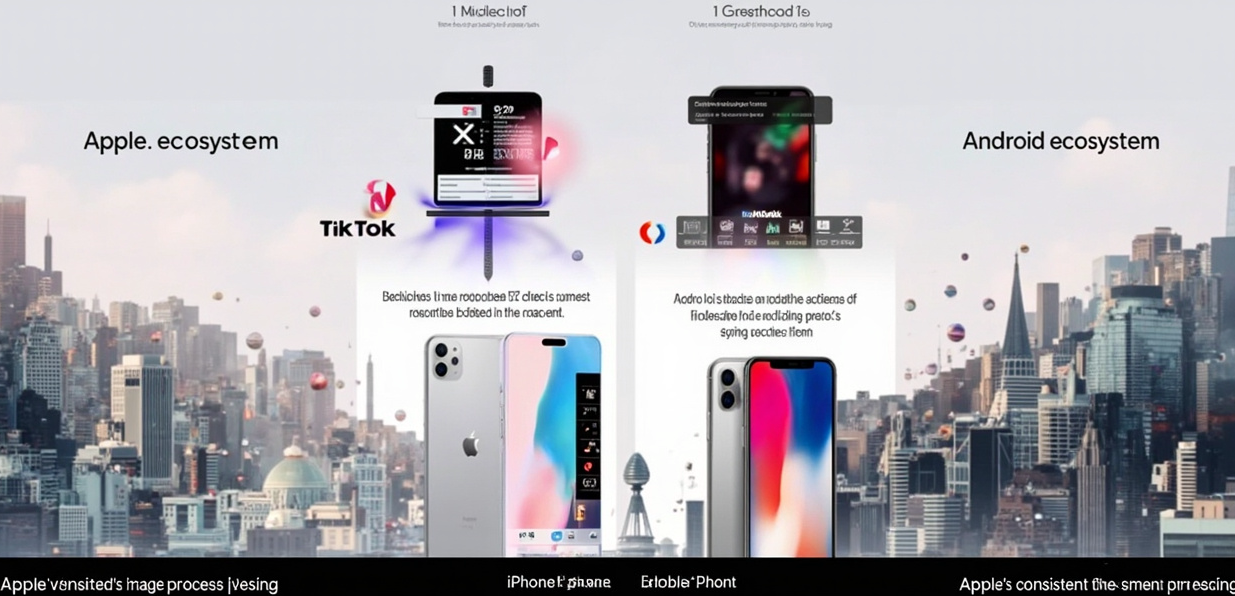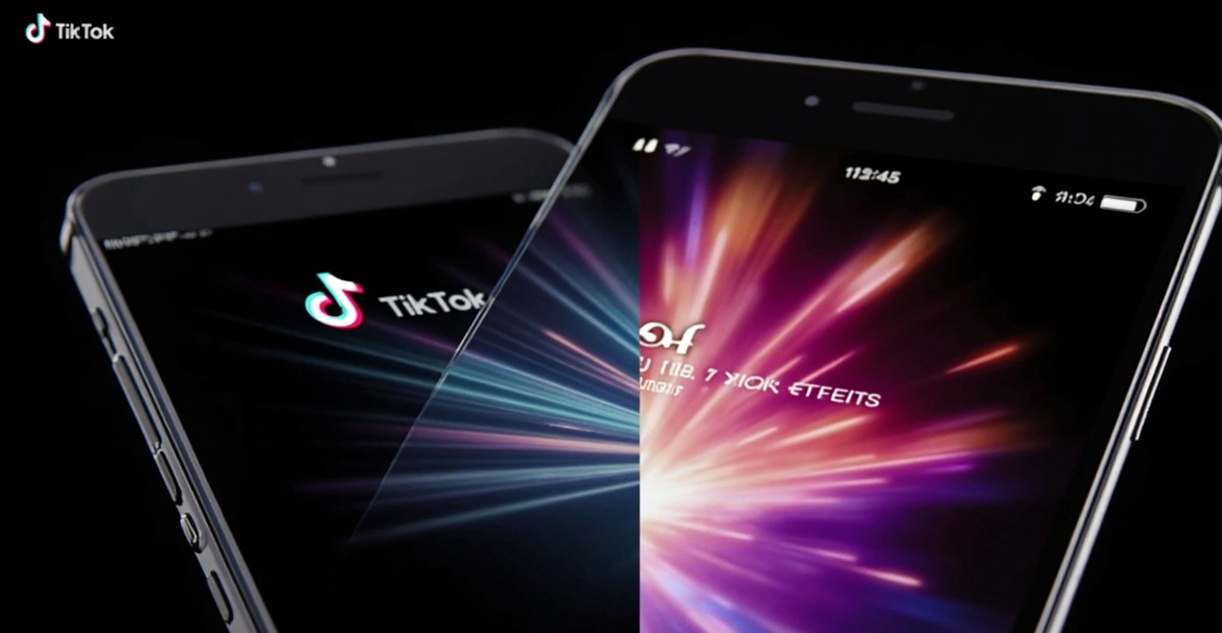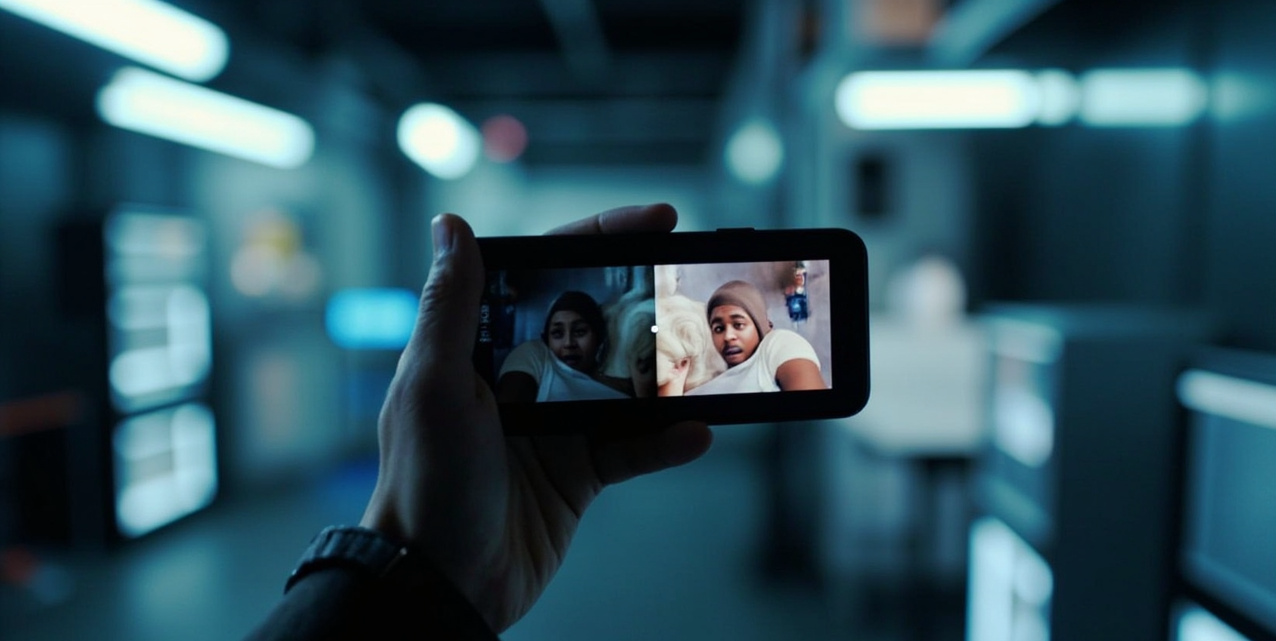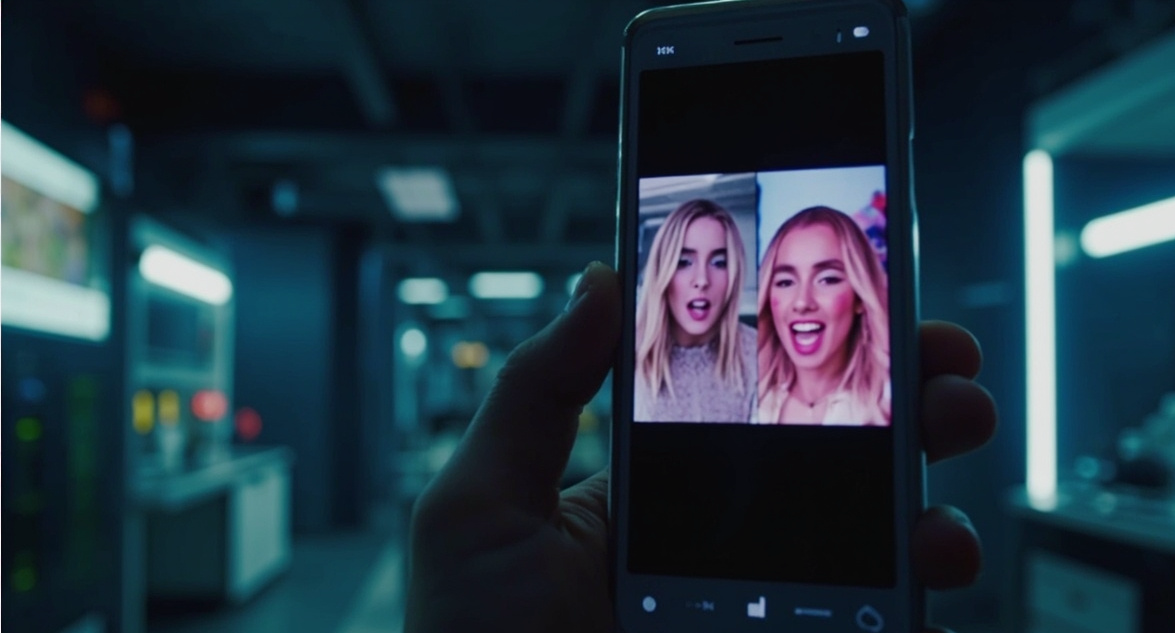- Why TikTok Effects Look Better on iPhone Than Android
- 1. Apple Ecosystem Is Small — Android Ecosystem Is Huge
- 2. TikTok Uses Direct Camera Access on iPhone
- 3. Android Phones Use the “Screen Recording Method”
- 4. Apple’s Image Processing Is Extremely Consistent
- 5. TikTok Compresses Android Videos More Aggressively
- 6. Influencer Priority — The Unspoken Reality
- 7. Android’s Multi-Lens Problem
- 8. Budget Android Phones Pull Down the Average
- 9. TikTok Effects Are Trained on iPhone First
- Final Thoughts
✅ Why do TikTok videos look better on iPhones than on Android phones?
✅ Why do iPhone videos look smoother, brighter, sharper, and more stable?
✅ Why do many Android videos look blurry, grainy, or dull in comparison?
TikTok Effects are everywhere — from short comedy clips to cinematic videos, but many users still wonder why they look better on iPhone than Android:
If you’ve wondered this, you’re not alone. This topic has frustrated millions of Android users across the world.
The truth is not technical bias, not marketing, and not because “iPhone is better.”
There are deep, real technological reasons behind this — and understanding them will help you improve your TikTok quality no matter which device you use.
TikTok Effects play a huge role in how videos look and feel on the platform, and creators depend on TikTok Effects to enhance clarity, lighting, and overall quality. However, many users notice that these TikTok Effects appear smoother, sharper, and more realistic on iPhones compared to Android phones. Understanding why TikTok Effects behave differently on each device is essential for anyone who wants better video quality in 2025. In this deep dive, we break down every technical reason behind the difference and explain how you can optimize TikTok Effects on your device.
This article goes step-by-step through the full explanation, written in clear, simple language — with technical accuracy, real creator insights, and examples.

✅ Overview: The Real Reason Behind the Quality Difference
Before diving deep, here is the simplest explanation:
TikTok is optimized better for iPhones because iPhones are easier to support, more consistent across models, and allow better access to the camera hardware.
Android is extremely fragmented — thousands of models, sensors, and camera pipelines — making perfect optimization nearly impossible.
Now let’s break this down in a detailed and understandable way.
1. Apple Ecosystem Is Small — Android Ecosystem Is Huge

(The #1 reason no one talks about)
This is the root of everything.
✅ iPhone Models Are Limited
Every year, Apple releases only a few models:
- iPhone 15 lineup
- iPhone 16 lineup
- iPhone SE refresh every few years
Across all models, Apple uses:
- Similar sensors
- Same image processing
- Same chipset architecture
- The same OS
- Almost identical APIs
This means one simple thing:
✅ TikTok can fine-tune their app perfectly for iPhones.
❌ Android Has Thousands of Devices
Android is the exact opposite.
There are:
- Hundreds of brands
- Thousands of models
- Multiple price segments
- Different camera sensors
- Different chipsets
- Different video processing architectures
- Custom skins (One UI, MIUI, OxygenOS, FuntouchOS, ColorOS, etc.)
Even two phones from the same brand — like Samsung A54 and S23 — don’t use the same camera system or API structure.
TikTok simply cannot create one perfect optimization that works for all.
✅ Result
| Feature | iPhone | Android |
|---|---|---|
| Device Variations | Low | Very High |
| Camera API | Uniform | Fragmented |
| Optimization Difficulty | Easy | Extremely Hard |
| Consistency | High | Low |
This is why the iPhone experience feels polished, while Android feels inconsistent from device to device.
2. TikTok Uses Direct Camera Access on iPhone

(This is HUGE — and most users don’t know it)
When you open TikTok on an iPhone and record a video, here’s what happens:
✅ TikTok gets direct access to the actual camera sensor, using Apple’s advanced API.
✅ It receives the high-quality feed exactly as the iPhone camera would record it.
✅ It applies clean stabilization, HDR, color processing, and full bitrate.
This creates:
- Sharper videos
- Accurate colors
- Strong low-light performance
- Smoother frame rates
- Stable exposure
This is why iPhone TikTok videos look clean even in low light.
3. Many Android Phones Use the “Screen Recording Method”

(The biggest secret behind blurry Android TikTok videos)
Here is the painful truth:
❌ TikTok cannot directly access the real camera sensor on many Android phones.
Why?
Because different brands implement camera APIs differently.
When TikTok cannot access the real camera feed, it uses a fallback method:
✅ TikTok records the camera preview
= basically the same as screen recording the viewfinder.
This automatically reduces:
- Resolution
- Dynamic range
- Sharp detail
- Exposure consistency
- Stabilization quality
Ever wondered why Android TikTok videos sometimes look:
❌ Blurry
❌ Soft
❌ Grainy
❌ Washed-out
❌ Low brightness
This is the reason.
4. Apple’s Image Processing Is Extremely Consistent

(The invisible advantage no one mentions)
Apple controls every part of the system:
- Hardware
- Software
- Processor
- Image Signal Processor
- Camera sensors
- APIs
- Ecosystem
This “tight control” allows Apple to produce:
✅ Perfectly balanced colors
✅ Natural skin tones
✅ Accurate brightness
✅ Clean HDR
✅ Smooth exposure
✅ Matching colors on all lenses
Every iPhone behaves the same.
Creators LOVE this consistency.
❌ Android Has No Standard Image Processing
Every brand uses its own algorithm:
- Samsung → Contrast + saturation boost
- Xiaomi → Sharpness and AI over-processing
- Vivo → Beauty-heavy skin smoothing
- Pixel → Computational photography
- OnePlus → Mixed processing
TikTok cannot perfectly balance these differences.
So the final video becomes:
❌ Unpredictable
❌ Overprocessed
❌ Unnatural
❌ Flat or too sharp
This directly affects how effects and filters behave.
5. TikTok Compresses Android Videos More Aggressively

This is another huge reason.
TikTok applies different video compression levels depending on:
- Camera feed quality
- Encoding format
- Device capability
- API version
- Stability of bitrate
✅ iPhones support higher, stable bitrates
→ Less compression
→ More details
→ Better color accuracy
→ Smooth gradients
❌ Many Android devices have unstable or lower bitrate support
→ TikTok applies heavier compression
→ Soft, pixelated, blurry videos
→ Color banding (patchy shadows)
TikTok doesn’t do this intentionally.
It simply does what the device allows.
6. “Influencer Priority” — The Unspoken Reality

TikTok wants its platform to look good.
Most influencers use iPhones for video creation because:
✅ Better consistency
✅ Color accuracy
✅ Reliable performance
✅ Easier to edit
✅ Fewer issues in low light
Since influencers drive traffic, trends, and algorithm engagement…
TikTok prioritizes iPhone stability and new features first.
Android eventually gets updates — but always slower and less optimized.
7. Android’s Multi-Lens Problem

(Why Android lens switches look glitchy)
Modern Android phones have:
- Main wide lens
- Ultra-wide lens
- Telephoto
- Depth sensor
- Macro lens
Each lens has different:
- Sensor sizes
- Color science
- Dynamic range
- Exposure
- White balance
Switching lenses during a TikTok recording causes:
❌ Color jumps
❌ Exposure shifts
❌ Sharpness changes
❌ White balance issues
iPhone solves this using:
✅ Unified calibration across all lenses
✅ Shared image pipeline
✅ Consistent color science
So TikTok on iPhone looks cleaner and more professional.
8. Android’s Budget Phones Pull Down the Average

This is a practical problem.
Most Android users do not use flagship devices.
The average user owns:
- Samsung A-series
- Xiaomi Redmi series
- Vivo Y-series
- Oppo A-series
- Realme budget models
These phones have:
❌ Small sensors
❌ Weak processors
❌ Weak image processors
❌ Slow shutter speeds
❌ Poor low-light capability
TikTok must create a “safe mode” for these devices → reducing video quality.
iPhone never faces this issue because even the “cheapest” iPhone SE has a strong processor and image pipeline.
9. TikTok Effects Are Trained on iPhone First

All advanced effects — like:
- AI filters
- Beauty modes
- Green screen
- 3D face overlays
- Skin smoothing
- Face mapping
- Background blur
These effects require:
✅ Stable camera feed
✅ Consistent brightness
✅ Predictable image pipeline
✅ High resolution & clean signal
iPhone provides the ideal environment for this.
Android cannot provide consistency across brands → so effects perform less accurately.
✅ So… Is iPhone Really Better for TikTok?
For TikTok specifically, yes — currently.
Not because Android is weak, but because Android is too diverse.
TikTok can never provide equal quality for:
- Samsung (One UI)
- Xiaomi (HyperOS / MIUI)
- Vivo (FuntouchOS)
- Oppo (ColorOS)
- Huawei (HarmonyOS)
- Nothing OS
- Realme UI
- Asus ROG UI
All using different camera processing.
iPhone’s simplicity gives TikTok a huge advantage.
✅ How to Improve TikTok Quality on Android (2025 Guide)
Here’s what you can do to boost quality instantly.
✅ 1. Enable Upload HD
TikTok > Settings > Upload HD
✅ 2. Record with the Phone Camera First
Then upload manually instead of using TikTok’s camera.
✅ 3. Use the Back Camera
Front cameras on Android are weaker.
✅ 4. Avoid Zoom
Zoom reduces quality drastically.
✅ 5. Use Good Lighting
Android sensors struggle more in low light.
✅ 6. Clean Your Lens
Fingerprints can destroy video quality.
✅ 7. Use 60FPS Recording
If your device allows it.
✅ 8. Keep TikTok Updated
New Android optimizations roll out frequently.
✅ 9. Turn Off Beauty Mode
It reduces sharpness.
✅ 10. Disable Power Saving Mode
It limits processing power.
If you tell me your exact phone model, I’ll give you a custom TikTok setup.
✅ Conclusion: Why TikTok Works Better on iPhone (Final Summary)
Here’s the truth in one sentence:
iPhone offers a stable, unified camera ecosystem that TikTok can easily optimize for — while Android’s massive device diversity makes equal quality almost impossible.
In short:
✅ iPhone has direct camera access
✅ Better processing pipeline
✅ Less compression
✅ Consistent color science
✅ Better performance in TikTok effects
✅ Stronger low-light capture
✅ Easier optimization for developers
✅ Fewer models → better tuning
Android struggles mainly because of inconsistency — not weakness.